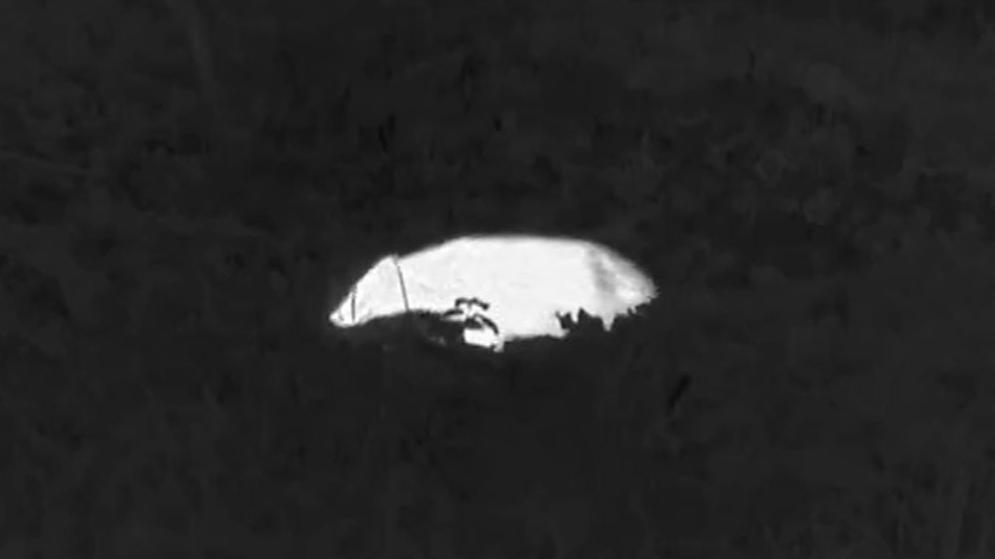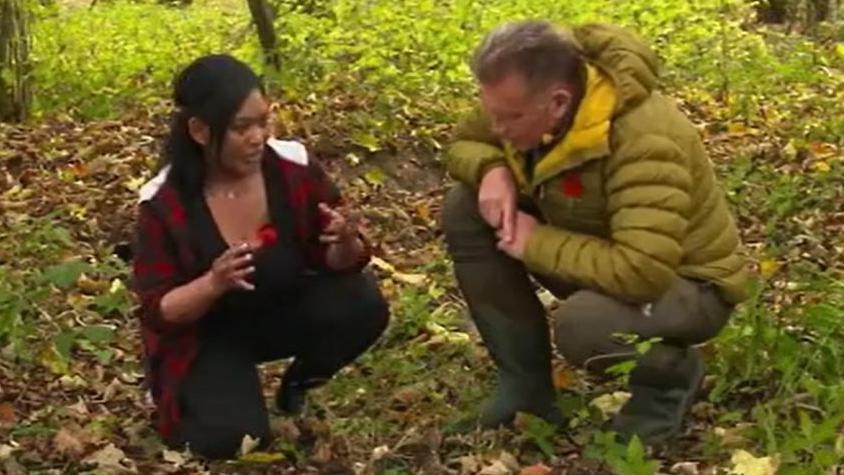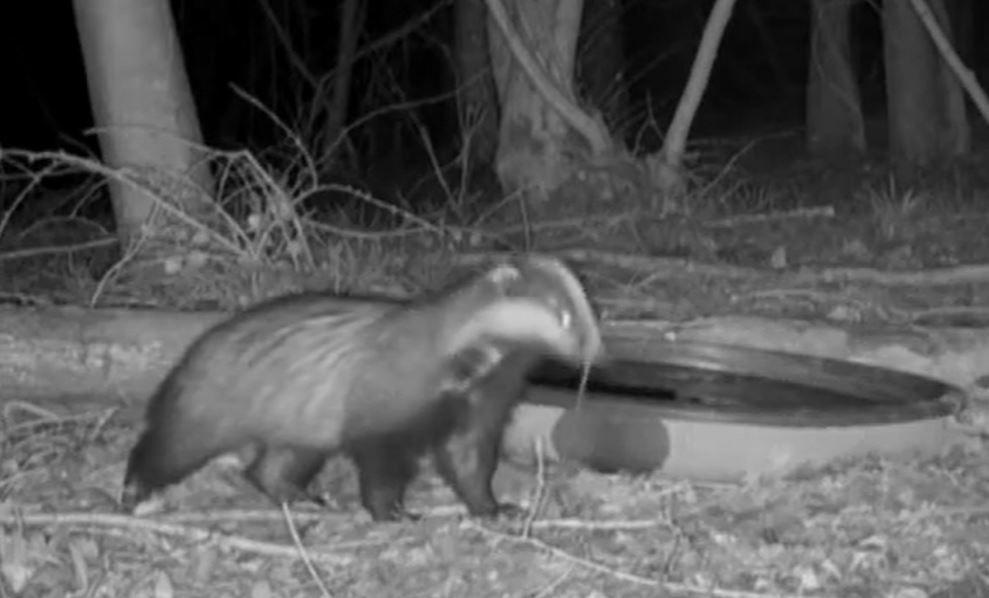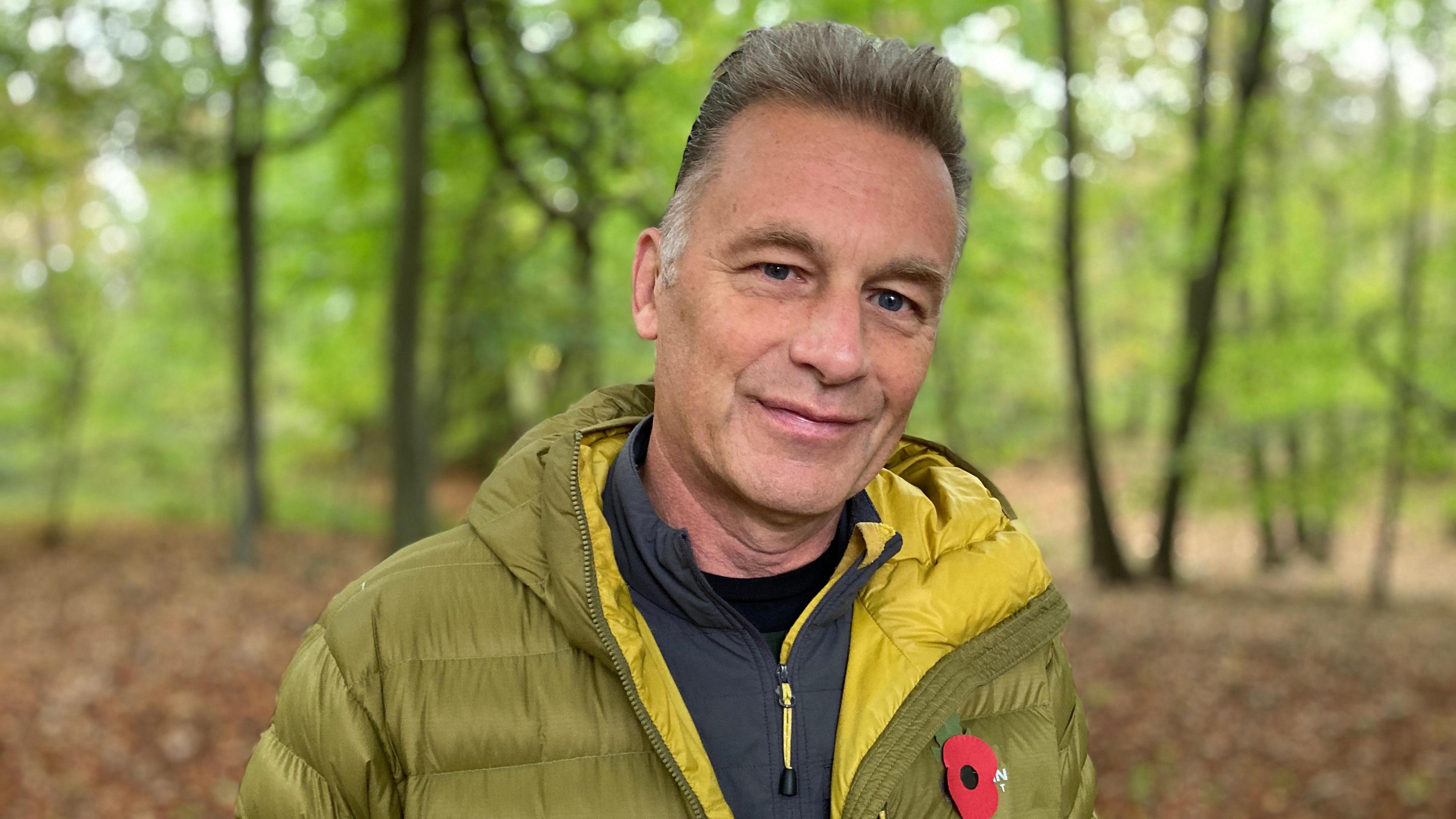'Highest badger population' observed after dark

Autumnwatch presenter Chris Packham said the thermal camera "quite literally sees heat in the dark"
- Published
The Autumnwatch team may have observed "the highest population of badgers anywhere ever recorded", presenter Chris Packham has said.
The animals were tracked in the dark during last night's episode broadcast from Wytham Great Wood near Oxford.
The team relied on thermal cameras that see the creatures' body heat.
Mr Packham said there were about 250 adult animals in about 20 social groups, with 1,000 holes to emerge on the wood's grounds.

University of Oxford Dr Tanesha Allen examines the badgers' diet through their faeces
He presented a map with white spots indicating the whereabouts of badger setts.
"It's fantastic to be able to see these animals," Mr Packham said.
"This is a camera that quite literally sees heat in the dark and that allows us to watch their natural behaviours without disturbing them in any way, shape or form.
"In all, I think we saw seven at the same time, so quite a busy sett."
He explained that thanks to trap cameras, the Autumnwatch team had recorded "all sorts of different behaviours".
Mr Packham described the cubs as "about the same size as the adults this time of the year" but "smaller, neater and a bit more boisterous".
"Another behaviour we frequently see is something called allogrooming," he said.
"This is where one badger grooms another, removing parasites and ticks."

Mr Packham said that earthworms made about 60% of the badgers' diet
"So the cubs are still here at this time of of year and that is important because food is of the essence," Mr Packham said.
"All of of these badgers have to put on weight at this time of year, they've got to make sure they have plenty to eat."
Dr Tanesha Allen, from University of Oxford biology department, examines the badgers' diet through their faeces.
"They tend to poo in something called latrines," she said.
These are holes in the ground, either at the edge of their territory or closer to their sett.
Examining one latrine, Dr Allen said that the badgers were "in a transitional period with their diet".
"There are some seeds in here which means they have been eating some fruit and probably some nuts which is more common in their diet during the summer," she said.
"But right now because it is a lot wetter, you can see they have have been eating more worms."
Mr Packham said that earthworms made up about 60% of the badgers' diet.
"They have very flexible noses noses and the use those to find them," he said.
"They actually suck them out of the ground... just like spaghetti."

Mr Packham said there were about 250 adult animals with 1,000 holes to emerge in Wytham Great Wood
Get in touch
Do you have a story BBC Oxfordshire should cover?
You can follow BBC Oxfordshire on Facebook, external, X (Twitter), external, or Instagram, external.
Related topics
- Published29 October 2024
